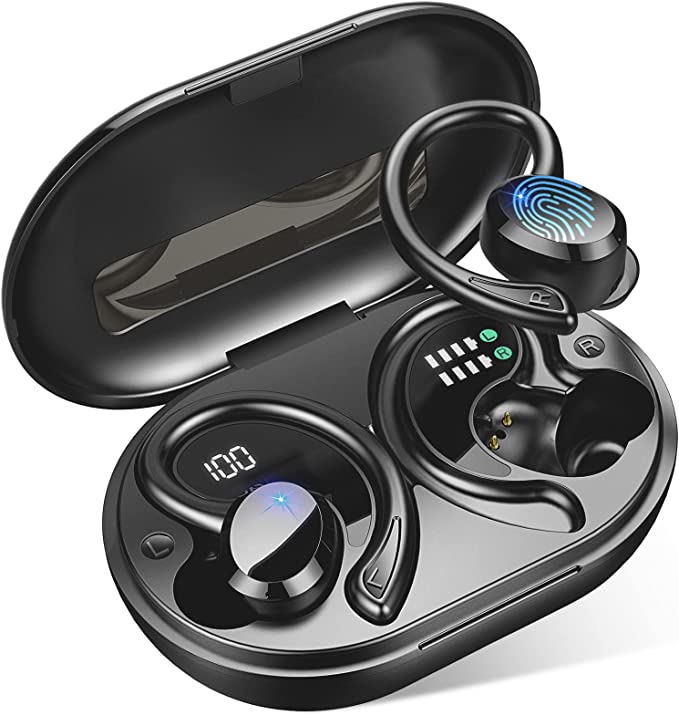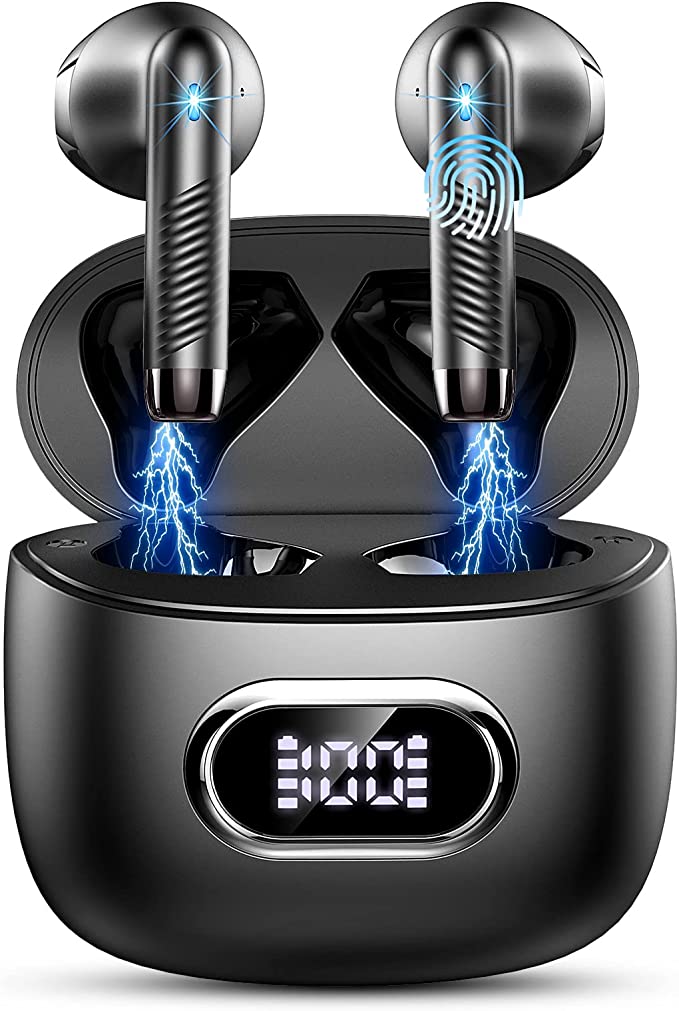Imagine this: you’re navigating a bustling city street, podcast playing, or perhaps running along a scenic trail, lost in your favourite playlist. Suddenly, a bicycle bell chimes urgently behind you, or a car horn sounds just out of sight. With traditional earbuds sealing your ear canals, these vital auditory cues might be dangerously muffled or missed entirely. We often face this dilemma – the desire for personal audio versus the non-negotiable need to stay connected and aware of the world around us. But what if there was a way to have both? What if you could hear your audio clearly, without blocking your ears? This isn’t science fiction; it’s the fascinating reality of bone conduction technology, brought into accessible reach by devices like the Eyancotoi K08 headphones. Let’s delve into the science behind this intriguing approach to listening.

Sound’s Secret Pathway: Understanding Bone Conduction
Most of the sound we perceive travels via air conduction. Sound waves journey through the air, funnel into our ear canal, vibrate the eardrum, and then pass through the tiny bones of the middle ear to reach the cochlea – the inner ear’s intricate spiral structure. There, these vibrations are translated into electrical signals that our brain interprets as sound. It’s a pathway we rely on constantly.
Bone conduction, however, offers an alternative route, a sort of “VIP entrance” for sound. Instead of relying on the ear canal and eardrum, bone conduction devices utilize small transducers that rest gently on the listener’s cheekbones, just in front of the ears. These transducers convert the electrical audio signals into subtle vibrations. Think of it like striking a tuning fork and feeling the vibration travel through the bone when you place its handle against your jaw. These vibrations travel through the bones of the skull directly to the cochlea. The inner ear doesn’t much mind how the vibrations arrive – through air or bone – it processes them all the same. The remarkable result? You hear the audio, yet your ear canals remain completely unobstructed, open to the world. The Eyancotoi K08, according to its description, leverages this very principle, using “vibration to transmit sound through the cheekbone.”

The Freedom of Open Ears: The K08 Experience
This open-ear nature is the most immediate and profound consequence of bone conduction, and it underpins many of the benefits described for the Eyancotoi K08.
Firstly, and perhaps most importantly, there’s enhanced situational awareness. With your ear canals clear, ambient sounds – the rumble of traffic, a colleague’s question in the office, the aforementioned bicycle bell – reach your eardrums naturally. For cyclists, runners, pedestrians, or even parents needing to keep an ear out, this can be a significant safety advantage compared to noise-isolating earbuds.
Secondly, there’s comfort. Traditional earbuds, especially those worn for long periods, can cause pressure, discomfort, or a feeling of occlusion within the ear canal. Bone conduction headphones, by design, avoid this entirely. The K08 description highlights its lightweight build (a mere 25 grams, or 0.88 ounces) and a “skin-friendly silicone wrapped lightweight frame” designed to rest comfortably around the head. This lack of in-ear pressure also makes them highly compatible with glasses, cycling helmets, or hats, items that often interfere awkwardly with traditional headphone designs. Some users find the open design feels more breathable and less fatiguing over hours of listening.

Untethered Sound: Wireless Stability with Bluetooth 5.3
In our active lives, wireless audio is practically essential. The Eyancotoi K08 connects using Wireless Bluetooth 5.3. While the underlying technical specifics can be complex, the user-facing benefits claimed in the product description are straightforward: “fast connection speed” and “stable signal.” In practical terms, this points towards a more reliable audio stream with fewer frustrating drop-outs, especially important when you’re moving. Bluetooth 5.3 represents a modern standard in wireless audio transmission, aiming for efficiency and robustness. The headphones are described as supporting connections up to 33 feet away from the source device, offering reasonable freedom of movement.
Compatibility is broad, with the description mentioning connections to standard Bluetooth-enabled devices like mobile phones and computers. A built-in microphone is also included, allowing for calls. However, it’s worth noting a point raised in the provided user feedback: while functional, some users reported that the person on the other end of the call perceived their voice as faint or distant. This suggests the microphone pickup might be a consideration for those who rely heavily on headphones for critical voice calls.
Soundtrack for an Active Life: Durability and Power
Headphones designed for sports and activity need to withstand the rigours of movement and the elements. The K08 description addresses this with an IPX5 waterproof rating. Let’s break down that code. ‘IP’ stands for Ingress Protection. The ‘X’ indicates it hasn’t been specifically rated against dust ingress, while the ‘5’ signifies protection against low-pressure water jets projected from any direction. What does this mean practically? It should comfortably resist sweat during intense workouts and handle being caught in light rain. It’s built to prevent “sweat, dust, and moisture,” according to the description. Crucially, however, IPX5 does not mean fully waterproof or submersible – the description rightly states they are “Not suitable for underwater swimming use.”
Powering these experiences is a battery described as offering “up to 10 consecutive hours” of music or calls from a single charge, with a lengthy standby time of 360 hours. Recharging takes a claimed 2 hours via a Type-C port. The adoption of Type-C is significant; it’s the modern, increasingly universal standard, meaning you likely already have compatible cables, adding a layer of convenience described as “safer, more stable, and more versatile.”
Listening in the Real World: Performance and Practicalities
So, how does the science translate into everyday use, based on the experiences shared in the provided source material? Users seem to appreciate the core benefit: the ability to listen to audio while remaining aware of their surroundings, particularly for activities like walking or cycling.
The sound quality is often described favourably in relation to the price point. One user compared it as delivering “about 80%” of the sound quality of a much more expensive premium brand, suggesting it offers a good entry into the bone conduction experience without breaking the bank. Bass is noted as present, though perhaps not as deep as some might prefer – a characteristic sometimes associated with bone conduction audio in general.
Comfort is generally rated well due to the lightweight design, although fit can be subjective. The frame is described as bendable, and some users mentioned needing to adjust it or use an included strap for a more secure fit, while others found it slightly bulkier than premium models. The convenience of the standard USB-C charging was also a noted positive. The primary drawback highlighted in the feedback revolves around the microphone quality during calls, as mentioned earlier.
Overall, the user insights paint a picture of the Eyancotoi K08 as a functional and accessible option for those seeking the primary benefits of bone conduction – situational awareness and open-ear comfort – particularly for sports and general listening, understanding the trade-offs typical for its market segment.

Hear More Than Just the Music
Bone conduction technology offers a genuinely different way to experience sound, elegantly solving the conflict between personal audio enjoyment and environmental awareness. It’s a technology grounded in the fascinating physics of sound and human anatomy.
Devices like the Eyancotoi K08, based on their description and the user feedback provided, serve as an accessible gateway to these benefits. They package the core principles of bone conduction with modern necessities like Bluetooth 5.3 connectivity, practical IPX5 water resistance for active use, decent battery life, and the convenience of Type-C charging. While acknowledging the reported trade-offs, particularly concerning microphone performance for calls, they represent how technology can adapt our sensory experiences, allowing us to weave audio into the fabric of our lives more safely, more comfortably, and perhaps, more consciously than ever before. They invite us not just to hear our music, but to hear the world alongside it.




